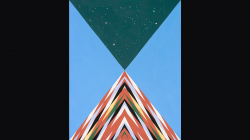Artist YehRim Lee Bucks Tradition in Favor of Juicy Delights in “Dopamine Dressing,” Now on View at UMMA
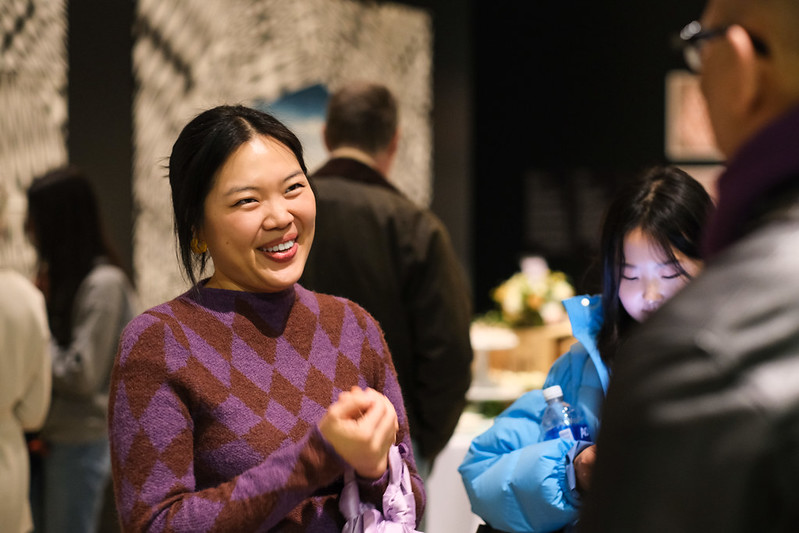
Photo by Mark Gjukich
“Should I fire this piece in the kiln anyway, or just throw it out and start over?”
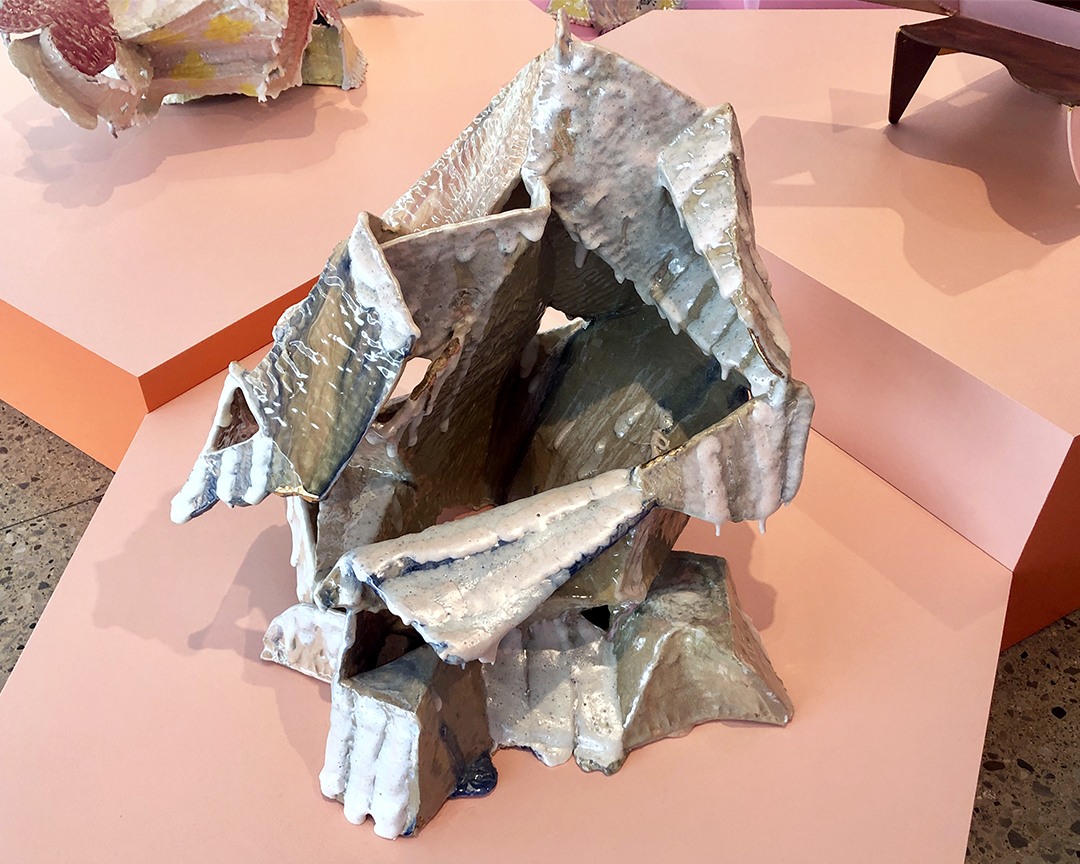 |
| YehRim Lee, Salmon Skin, Photo by UMMA Staff |
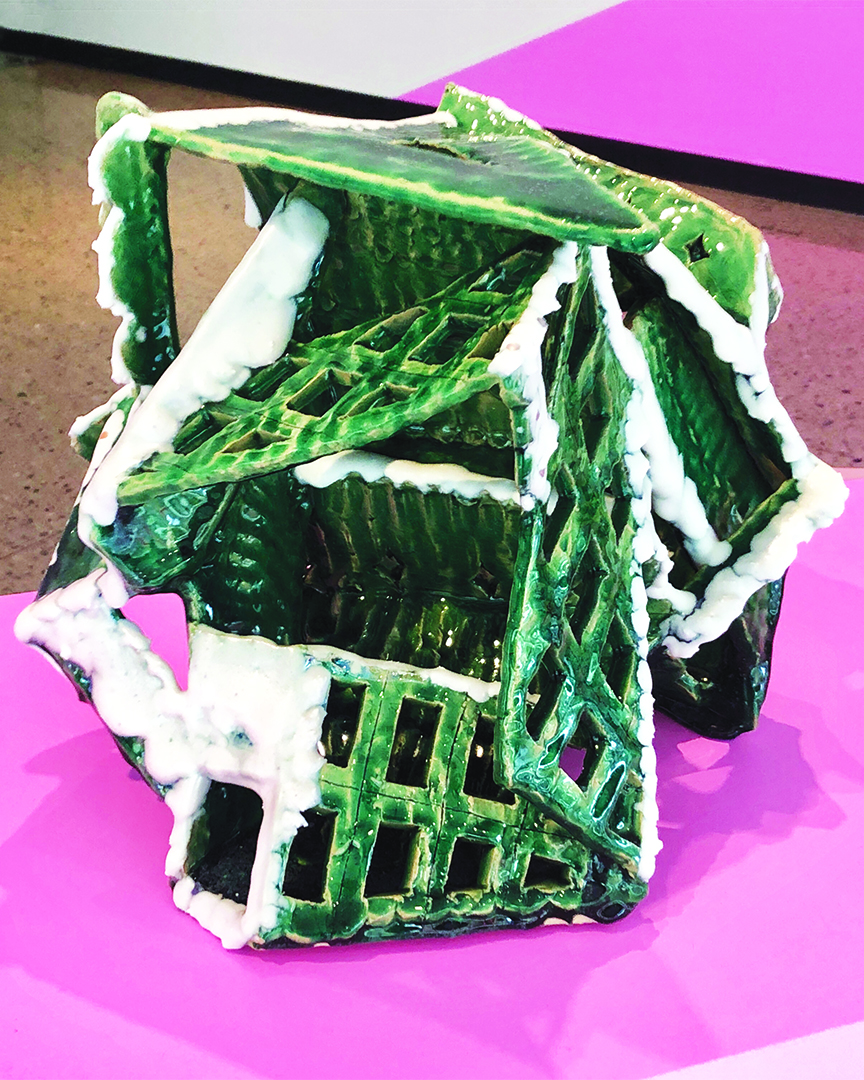 |
| YehRim Lee, Candy Angle Green Small, Photo by UMMA Staff |
That was the question abstract sculptor YehRim Lee posed to her Instagram followers while working on a piece she eventually called Three Hearts Are Trouble (pictured below). The unfired clay had collapsed under its own weight, and she wasn’t sure she liked the result. But when 98 percent of the poll respondents voted she should keep working on it, she did. “I thought, what’s wrong with those other 2 percent of people?” Lee said, laughing as she recounted the story.
The morning after the Penny Stamps Speaker Series talk,,she was meeting with members of UMMA’s Student Advisory Board about a traditional upbringing that helped her find an untraditional artistic voice. She spoke not only of her current exhibition at the Museum, Dopamine Dressing, but also about her roots in South Korea.
Lee’s parents were both sculptors; they opened a studio together and specialized in onggi ware. These large pots, typically brown, have been used for several thousand years to store kimchi and other fermented foods. Lee spent time in her father’s studio as a small child, and eventually moved on to making traditional Buddha sculptures while in college. After graduating, she intended to “get away from clay” and applied to study abroad in China–but was placed in Jingdezhen, a city known as “the porcelain capital of the world.” Again, Lee found herself constantly surrounded by ceramics in styles that had hardly changed over thousands of years of production. It wasn’t until she came to the United States that the idea of “expressing yourself” through art really took hold in her, and she began to let go of the idea that she needed to work within the guidelines of conventional Asian ceramics.
The pieces in Dopamine Dressing, on view at UMMA through August 2023, swirl and swoop, some with scalloped edges and others with points sharp enough to take your eye out. Many have both.
“My husband says this one looks like salmon skin,” Lee said, motioning to a sculpture called, appropriately, Salmon Skin, which has a silvery sheen overlaying the pink surface. “And that one”–Candy Angle Green Small, a boxy, emerald green creation–"looks like a tree, so we had it up in our house for Christmas."
UMMA AND THE PENNY STAMPS DISTINGUISHED SPEAKER SERIES PRESENT ARTIST YEHRIM LEE: DOPAMINE DRESSING
Watch on YouTubeSave for the couple metal sculptures, which required cardboard models before fabrication, she prefers to skip any planning and just build intuitively. Every ceramic piece has been daubed and splattered with a thick glaze–mostly white, almost like buttercream frosting, but with vibrant streaks of pink, yellow, and green as well.
“I have no patience,” Lee said, laughing, as she explained her interest in, excess, overabundance, and gluttony–a combination that she simply calls “too much-ness.” She likes to layer more and more glaze onto each piece long after other artists might have decided they were done.
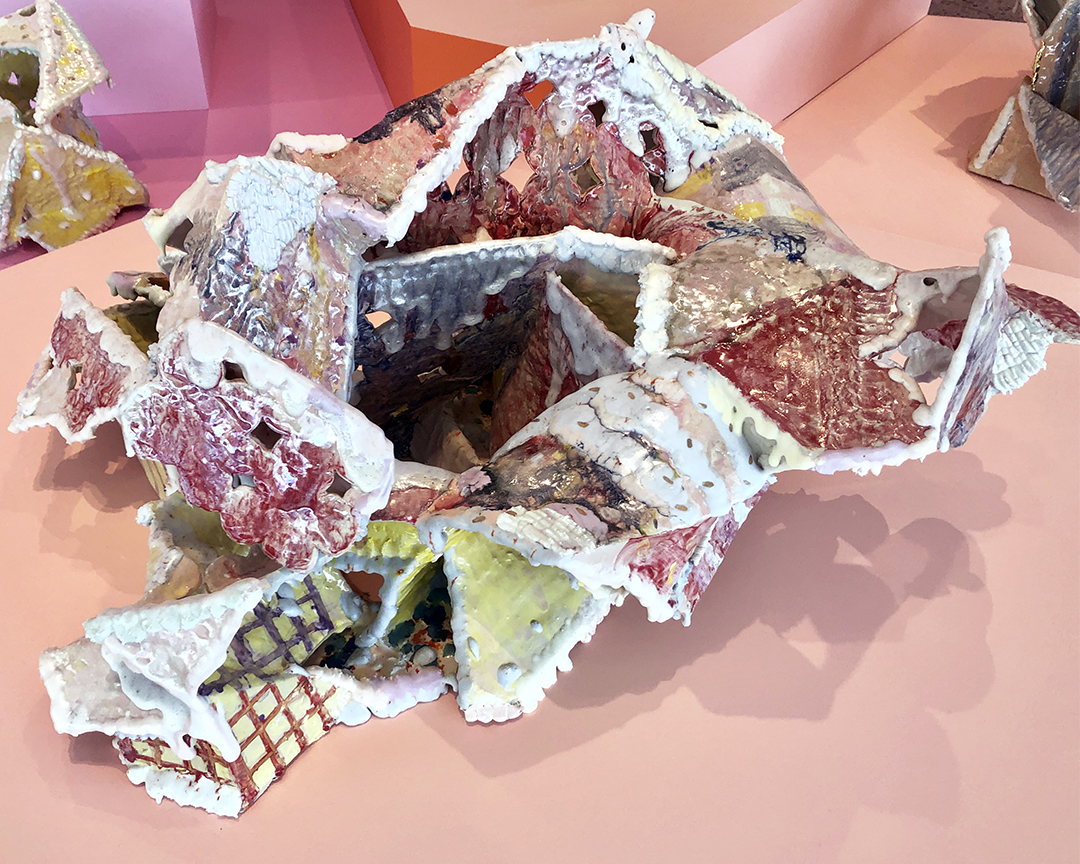 |
| YehRim Lee, Three Hearts Are Trouble, Photo by UMMA Staff |
This exhibition, her first solo show in the United States (where she has lived for a decade now), was originally conceived a bit differently. UMMA’s early plans included commissioning Lee for sculptures that would hang from the ceiling and walls of the staircase between the Japanese and Chinese galleries. UMMA’s Curator of Asian Art, Natsu Oyobe, had wanted to show how young, contemporary Asian artists like Lee are responding to and interacting with traditional Asian ceramics.
But, as evidenced by Three Hearts Are Trouble, clay is heavy. Lee was concerned about the possibility of her work falling off the walls (“I don’t want to be in the newspaper for my art killing a visitor,” she joked), and the exhibition transformed into its current iteration in the Stenn Gallery, where the bright pink explosion is visible from the street. Some of the smaller pieces (she calls them “wall flowers”) are hung on the walls. The heftier ones are poised on a variety of pink pedestals that Lee designed herself.
Though most of Lee’s work is abstract, she’s recently started experimenting with furniture–for example, putting a flat glass surface on top of an existing sculpture to make a table. Since getting married a few years ago, she became more interested in the idea of stability and how owning furniture contributes to that. And would she ever try her hand again at the traditional styles she grew up with? Maybe. “I like to go back and forth,” she said. “I know where to go back, and I know where I came from.”
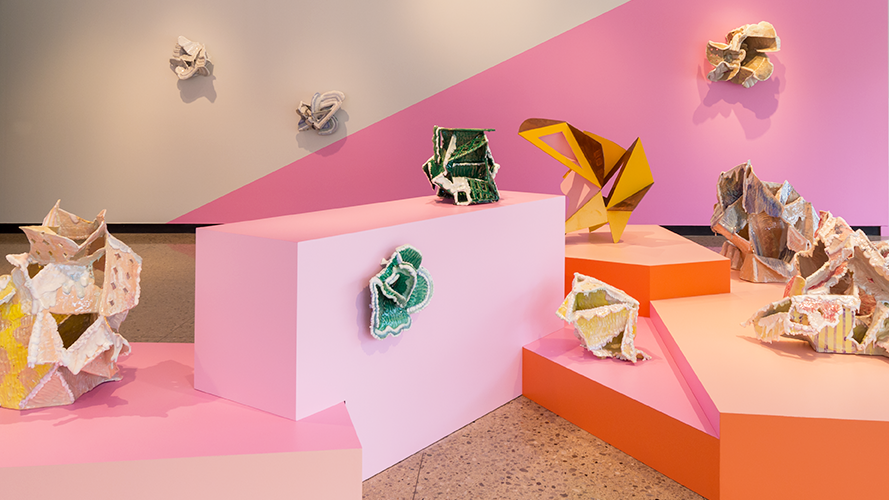
Installation image of Dopamine Dressing by Charlie Edwards

